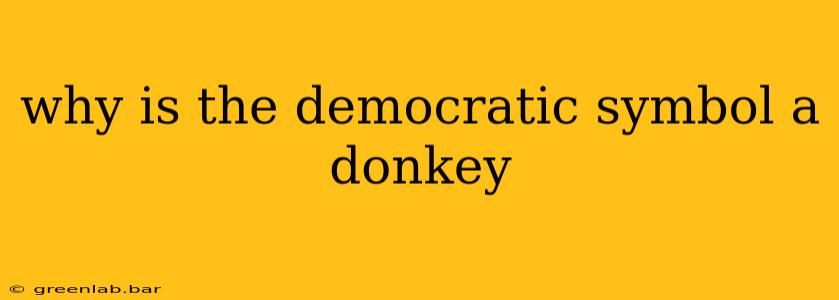The Democratic Party's iconic donkey symbol, a seemingly whimsical choice, actually boasts a rich and surprisingly contentious history, deeply intertwined with the evolution of American political cartoons and the party's own identity. Understanding its origins requires delving into the vibrant, often-fierce, world of 19th-century political satire.
The Birth of a Symbol: Andrew Jackson and the "Jackass"
The donkey's association with the Democratic Party primarily stems from the political cartoons of Thomas Nast, a highly influential illustrator for Harper's Weekly in the late 19th century. While Nast wasn't the first to use the donkey, he solidified its connection to the Democrats, often portraying it alongside its Republican counterpart, the elephant.
But the story begins even earlier. During the 1828 presidential election, Andrew Jackson's opponents derisively labeled him a "jackass." This wasn't necessarily meant as a purely negative insult; the jackass, while stubborn, was also seen as strong-willed and independent – qualities Jackson's supporters readily embraced. This early use of the "jackass" as a symbol, though initially derogatory, paved the way for its later adoption.
Nast's Masterful Strokes: Cementing the Donkey
Nast, a skilled artist known for his powerful imagery and political commentary, capitalized on this existing association. He began using the donkey regularly in his cartoons, cleverly depicting it in various scenarios to comment on Democratic policies and politicians. He wasn't simply illustrating; he was narrating political events through visual storytelling, shaping public perception.
His depictions weren't always flattering. Sometimes the donkey was depicted as stubborn or even foolish, reflecting criticisms of the Democratic Party. Yet, by consistently using the donkey, Nast inadvertently created a powerful and lasting symbol. The consistent repetition, across numerous cartoons and a wide readership, effectively branded the image in the public consciousness.
The Elephant's Arrival and the Iconic Duo
The Republican elephant, also a product of Nast's artistic genius, further solidified the donkey's place in American political iconography. By pairing these two distinct animals, Nast created a visually memorable and easily understood representation of the two major political parties. This "duel" of animals added another layer of narrative to his cartoons, enhancing their impact and memorability.
Beyond the Cartoons: The Enduring Legacy
The donkey's enduring appeal lies not just in its visual simplicity but also in its inherent ambiguity. Unlike the elephant, which might be perceived as majestic or even imposing, the donkey carries a more nuanced image. It's stubborn, yes, but also resilient and hardworking – traits that can be interpreted positively or negatively depending on the context.
This inherent flexibility allows the symbol to adapt and resonate with different segments of the Democratic Party's base over time. It's a testament to Nast's artistry that a seemingly simple animal drawing has become such a potent and enduring symbol of one of the world's oldest and most influential political parties.
Conclusion: A Symbol's Power
The Democratic donkey's journey from a derogatory epithet to a cherished symbol is a fascinating example of how political cartoons can shape public opinion and create lasting cultural icons. The story of the donkey reflects not only the history of the Democratic Party but also the power of visual imagery in shaping political narratives. Through the skillful hands of Thomas Nast, a simple animal became a powerful symbol, a testament to the enduring influence of political cartoons and the complexities of American political history.

